Night Sky – February 2018: How to spot the 'Thin Moon'
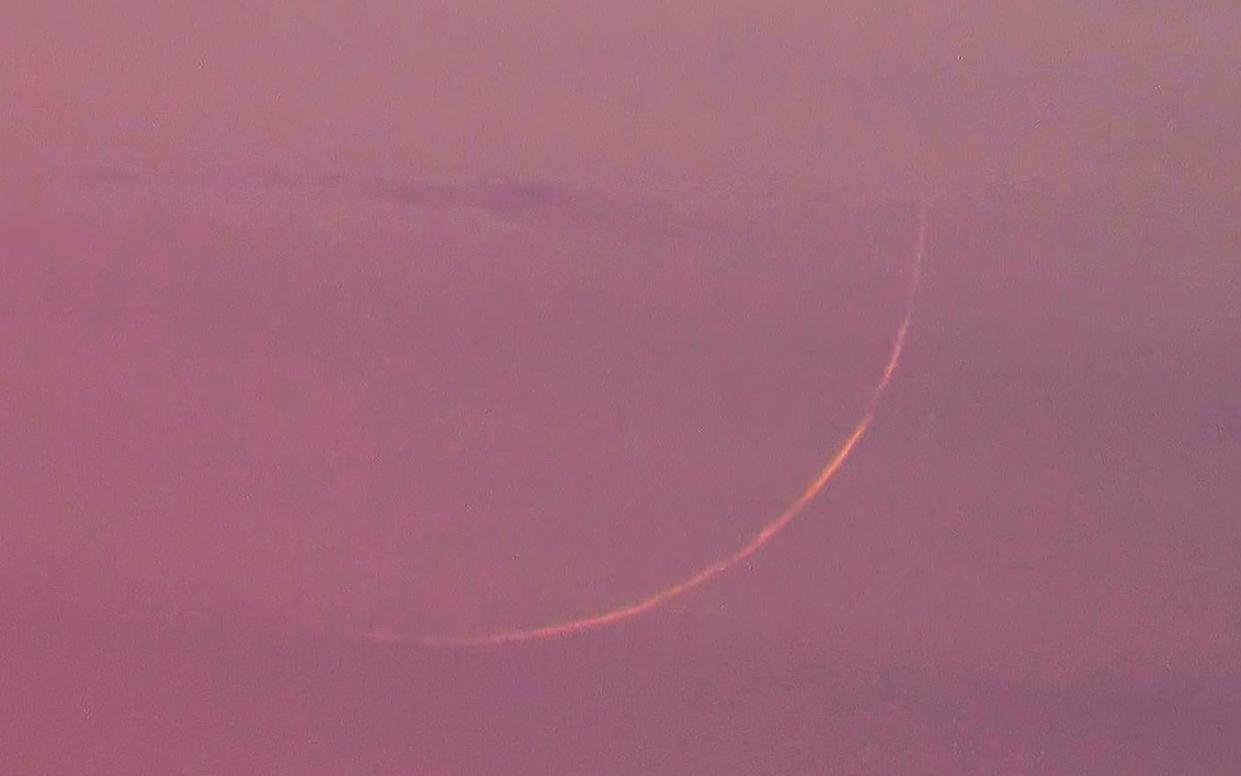
This month, in the early hours of Feb 12, early risers get to see Mars close to its celestial rival, the red-supergiant star Antares, the star marking the heart of Scorpius the Scorpion.
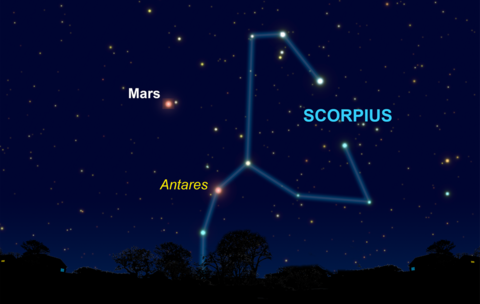
The name Antares derives from ancient Greek meaning ‘equal to Mars’, attributed because, like Mars, it shines with an orange hue. On the 12th, as luck would have it, both objects will also have similar brightness making this an ideal time to compare them. The apparent proximity of Mars and Antares is a line-of-sight effect of course. In reality Antares will be slightly over 22 million times more distant than Mars on this date.
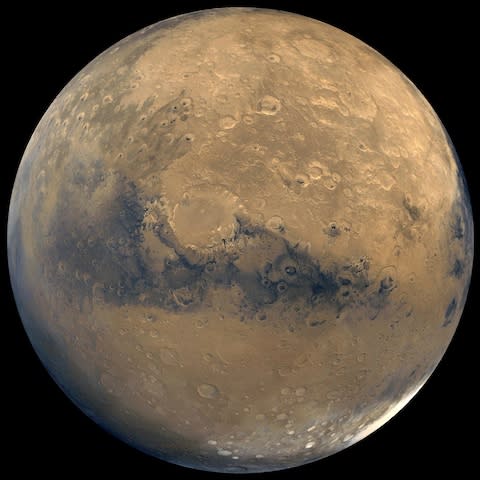
Thin Moon
This month the Moon is new and lined up with the Sun on the 15th. The early months of the year favour views of the evening waxing crescent Moon which appear just after the new phase. This is because the Moon’s path in the sky tilts steeply against the western horizon after sunset during the spring.
There is a theoretical threshold known as the Danjon Limit which states that the centre of the Moon’s disc needs to be more than 7 degrees from the centre of the Sun for the emerging thin lunar crescent to be seen. The Moon’s surface is rugged, covered in craters, valleys and mountains, and the Danjon Limit takes this into account.
The challenge of seeing a very thin lunar crescent can become addictive but it’s important to wait for the Sun to have set properly before looking. Failure to do so could lead to eye damage. In order to spot a thin Moon, you need to know where to look and to make sure that the horizon in that direction is unobstructed. The weather also needs to be kind.
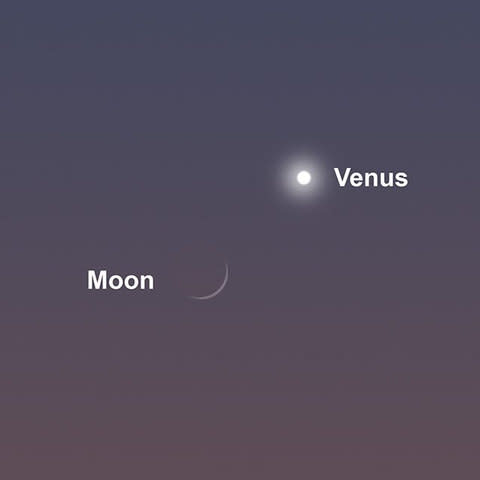
On Feb 16, a 21.5 hour old, 0.8pc illuminated crescent may be seen close to the brilliant planet Venus. Both objects will be low in the west, best seen approximately 20-30 minutes after sunset. The centre of the Moon will appear 0.75 degrees to the left and slightly below Venus at this time. One degree is equal to the width of your little finger at arm’s length.
This thin hairline crescent will be extremely challenging to see against the bright twilight sky. However, such opportunities aren’t common and with Venus guiding the way, this is a great time to try.
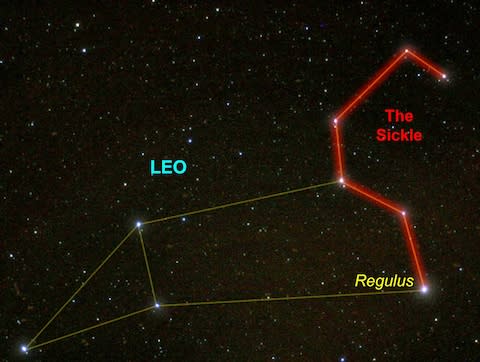
The sky around midnight marks a transition from winter. The bold constellations surrounding Orion now appear west of south, chased from the east by more subtle patterns of spring. Distinctive Leo the Lion dominates the view east of south, easily identified thanks to its backward question-mark pattern known as the Sickle.
The brightest star in Leo is Regulus, located at the base of the Sickle. The lion faces west towards Gemini the Twins, highlighted by the two twin stars Castor and Pollux. Lying mid-way between Regulus and the twin stars is the inverted Y-shaped constellation of Cancer the Crab.
Cancer isn’t particularly bright and easily overlooked. A small pattern of four stars in its centre frame a lovely open cluster known as M44, the Beehive Cluster or Prasepe meaning ‘manger’. The ancient Chinese describe the cluster as the ‘exhalation of piled-up corpses’, a reference to the belief that the cluster marked a gateway for departing souls transitioning from this world to the next. The Beehive appears as a misty patch from a dark sky location and looks wonderful through binoculars.
The 'solitary one'
A fainter open cluster known as M67 sits west of Cancer’s alpha star, Acubens. This cluster requires binoculars or a telescope to see and is an interesting object believed to have formed at the same time as the Sun. Around 100 of the cluster stars appear similar to our own Sun and for a time it was thought that M67 may have been the Sun’s birthplace. Modern simulations show this is now unlikely to be true.
South of Cancer is an attractive sideways teardrop pattern representing the head of Hydra the Watersnake. Although Hydra is the largest constellation in the entire sky, it lacks defining features apart from the aforementioned head and its orange coloured alpha star Alphard, located in the creature’s neck. Alphard means ‘solitary one’.
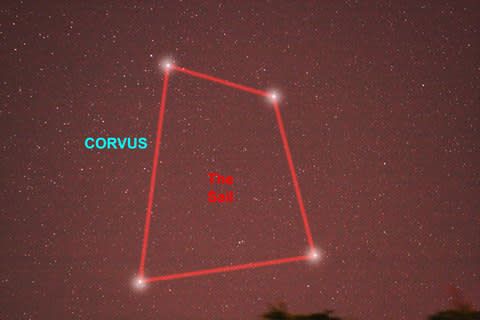
Legend has it that the thirsty Sun God Apollo sent his pet crow Corvus to Earth to collect a cup of refreshing stream water. When the crow landed on the banks of the stream it spied a ripening fig tree and proceeded to gorge on the fruit. Some time and many figs later, Corvus realised he was in trouble for neglecting his primary task. He concocted a story describing how he’d been attacked and delayed by a water snake.
Upon his return and delivery of the tale, Apollo saw through the ruse and in his anger cast the crow, cup and watersnake into the heavens. The crow is represented by the constellation Corvus best seen in the morning sky during February, and the cup by Crater, both riding on the back of the lengthy and much maligned water snake Hydra.
This month's night sky
Night sky Feb 2018
This chart shows how the sky will appear at 11pm on 1 February, 10pm on 15 February and 9pm on 28 February. The planets are shown along with the location and phase of the Moon at 5-day intervals. There is no full Moon this month. The stars are shown as circles; the larger the circle the brighter the star. The hazy area represents the Milky Way.
Orientate the chart by holding it in front of you rotated so the compass bearing at the bottom matches the direction you’re facing. The bottom of the chart then reflects your horizon with the middle of the chart representing the view directly above your head. The chart is designed to be viewed using a red torch outside. Red light allows you to see the chart detail without ruining your night vision.

